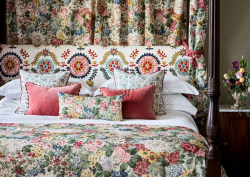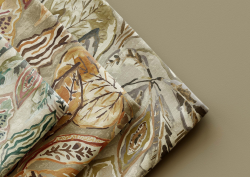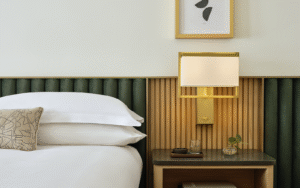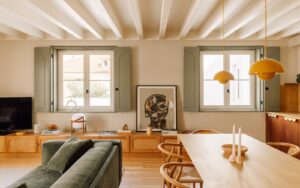Unveiled at the close of 2024, Dedar Milano’s new ‘light and luminous’ fabric collection reinterprets and enriches its current textile library…
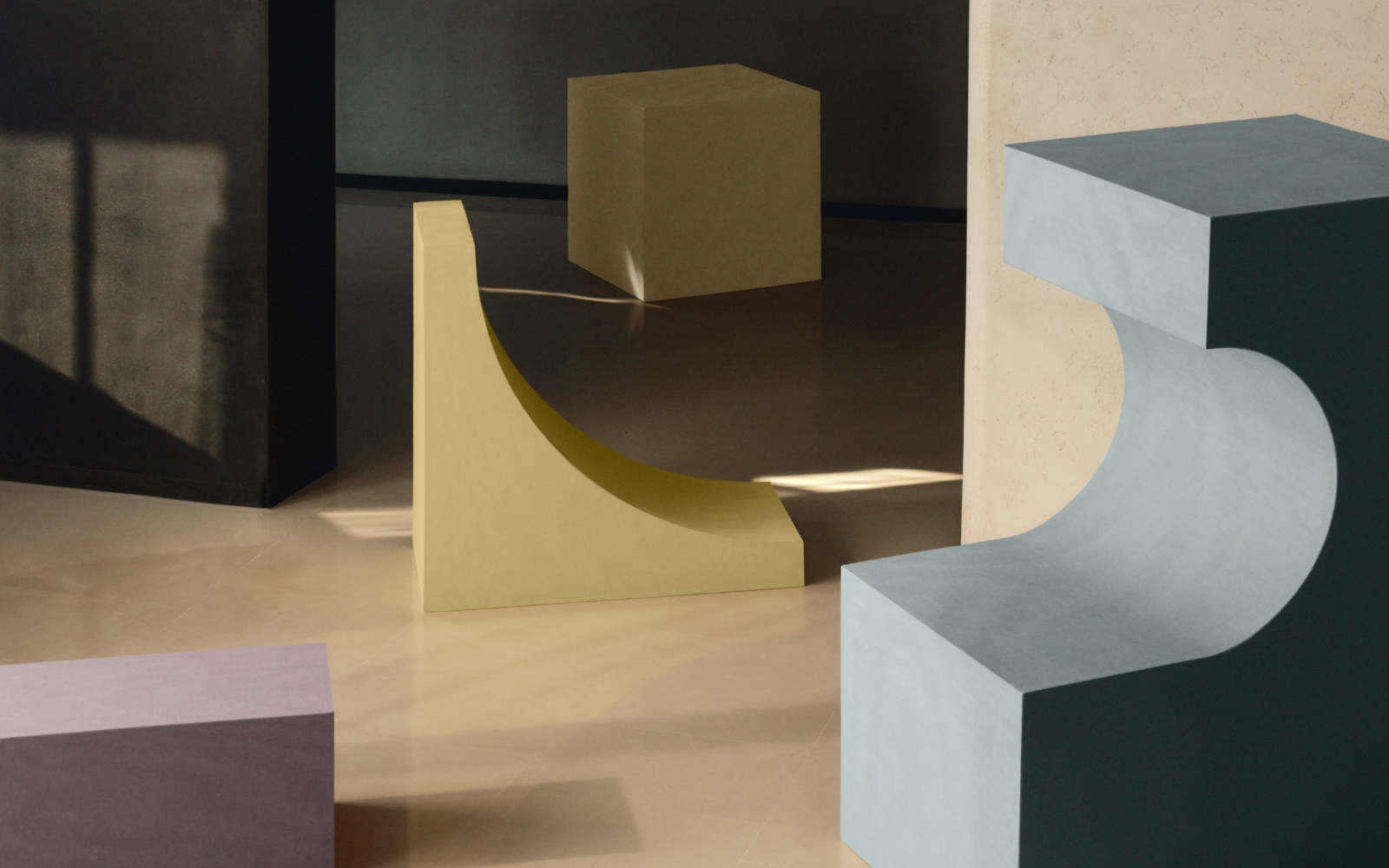
Light, luminous, subtle and yet striking, the newest 20-strong sheer materials and wallcoverings collection from Italian fabric house Dedar Milano is revealing new dimensions to it’s White Writings family, while also delivering enlivened embroideries, fruity colour palettes and metal voiles t0 inspire.
Transparencies
Natural fibres like linen and hemp, with their raw and organic qualities, are combined with the softness and warmth of wool, resulting in lightweight and airy designs. Textural sheers introduce innovative combinations, such as raffia, alongside new approaches to weaving and transparency levels. These sheer fabrics typically come in muted tones that highlight subtle details, but this collection from Dedar also includes the bold use of colour to explore a variety of perspectives.
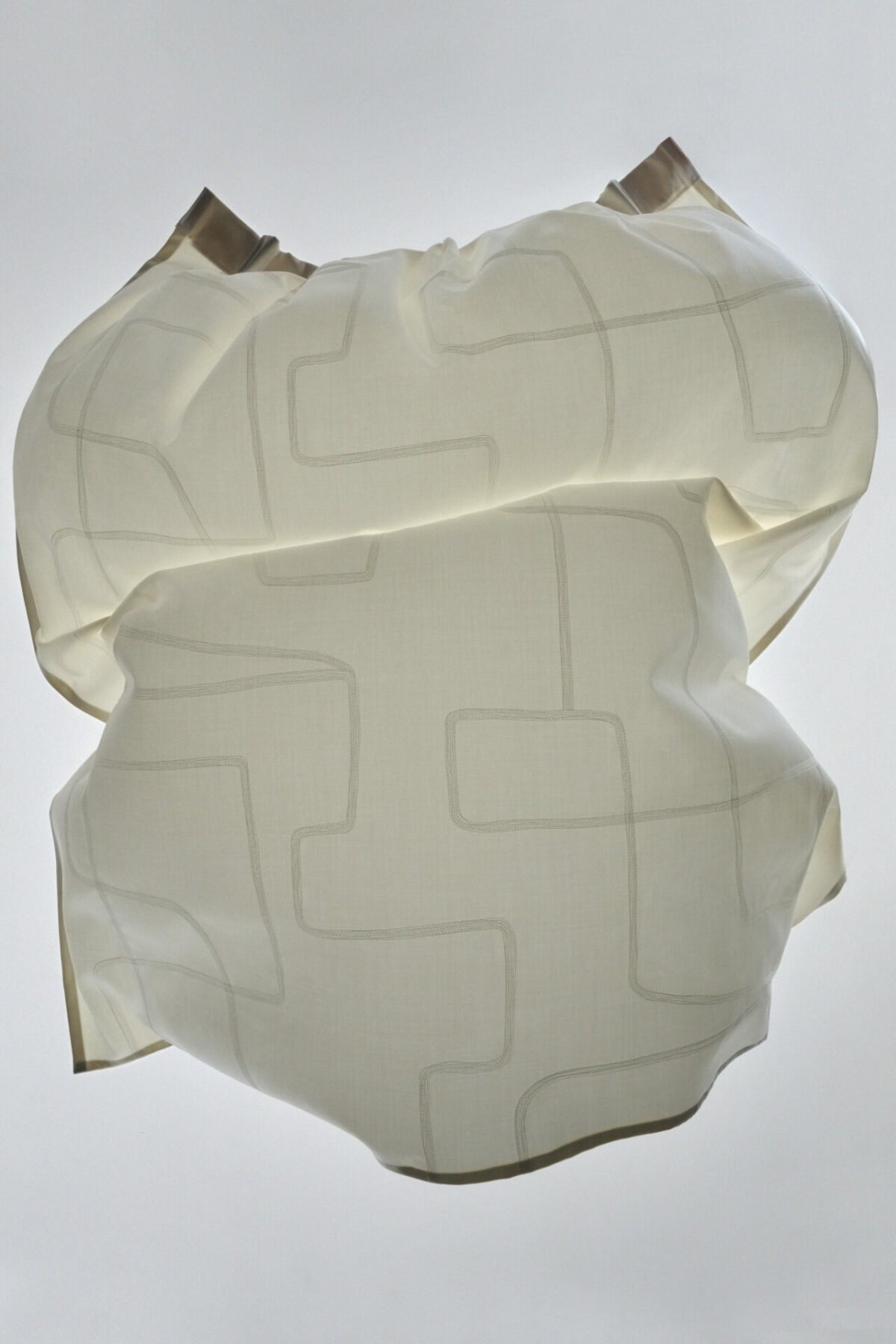
Image credit: Dedar Milano
Lumillumina — taking its name from the Finnish lumi, meaning snow — reinterprets the evocative geometric motifs of Dedar’s jacquard Nevicava fabric by introducing veins of metallic, to recall the world of jewellery. In the play of knit fabrics and speckles of other transparencies streaked with the reflections of noble metals, early 20th century evocations spring to mind: from jewellery pieces by René Lalique and Georges Fouquet, to the energy of the first decade, with its flappers and jazz, as well as the slinky fashions of the Roaring Twenties.
Further additions to transparencies consists of two soft, drapey sheers with a striking natural personality: a slightly slubbed and linen-rich canvas weave, and a hemp fabric expressing white nuances in a warm and golden mood, Cnossian. While Wool provides an unusual billowy interpretation for airy, luminous curtains. The pleating of Leporello creates a wavy three-dimensionality. In three flexuous fabrics of extra width, wool yarns of different thicknesses come together in sparse weaves of ever-increasing transparency. A final woolly canvas weave in ondé yarn displays a more textural character — texture being the raison d’être of Autrebois too.
Transparencies also comprises of two fire-retardant fabrics, available in a double width, as well as being washable and crease-resistant. A wide spectrum of styles and suggestions ranges from the micro geometric patterns of Kin to linen-like personalities, alongside a feeling for matter enhanced by airy weaves and bulky ondé threads.
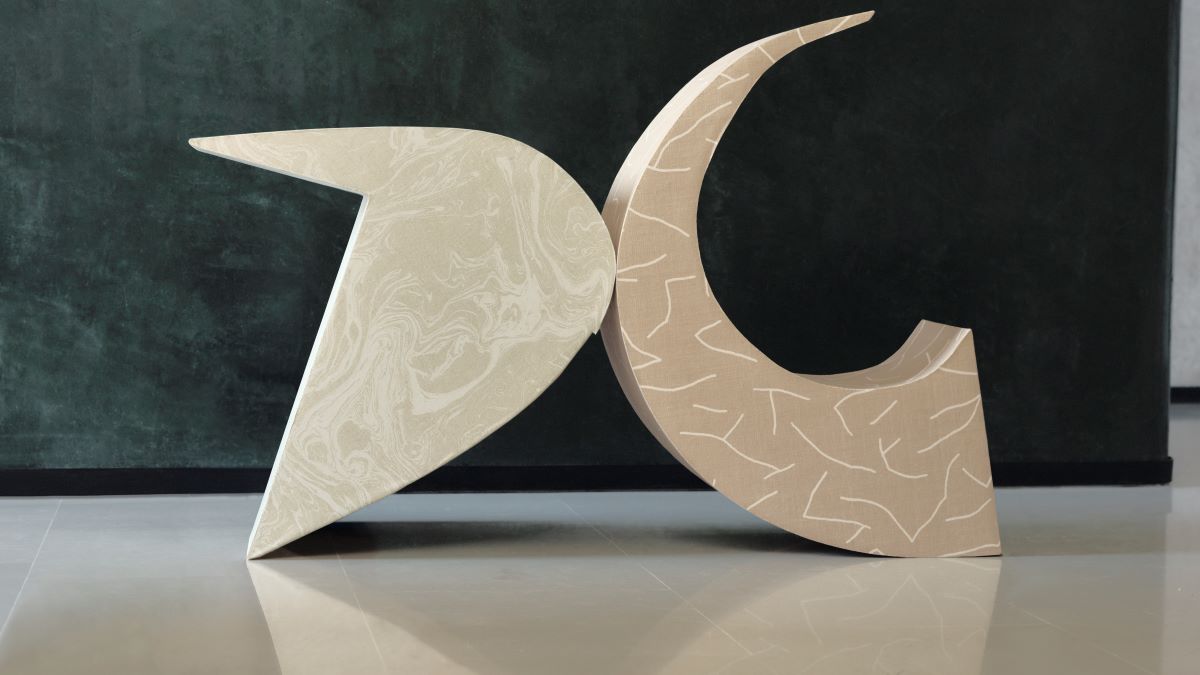
Image credit: Dedar Milano
The other side of new transparencies comprises fabrics enlivened by embroidery or artistic touches. By pursuing research into White Writings, Dedar devises unprecedented formal solutions for them. In the backlight of the curtain — in the play of shadows, whether strongly pronounced or barely whispered – the white colour theme, already stratified and variegated, creates volumous chiaroscuro effect.
From the outset, White Writings has introduced an unprecedented visual and design idiom to the world of interior design; the new sheers contribute to enriching this vocabulary and enabling the expression of new projects.
In the new transparencies, in some cases the embroidered motif has been placed on existing grounds of the collections. This paves the way to countless possible combinations, from the most obvious to others of a more surprising and personal nature. Patterns and plains offer their joint contribution to animate a rich and dynamic dialogue.
The degree of transparency varies significantly too, from being dense and precise in appearance, as in the case of the Cielo and Aplomb embroideries, to the more irregular and textural variants interpreted on a ground of Wide Linen Sablé. Some of the embroidered motifs revisit the pattern of Promenade Kafkaïenne and Liberabirinto, while transferring it onto grounds of various kinds: from an extremely fine and densely warped merino wool (as is the case of Dancing the Horizon) to a pure linen enlivened by a textural translucency (Regolith).
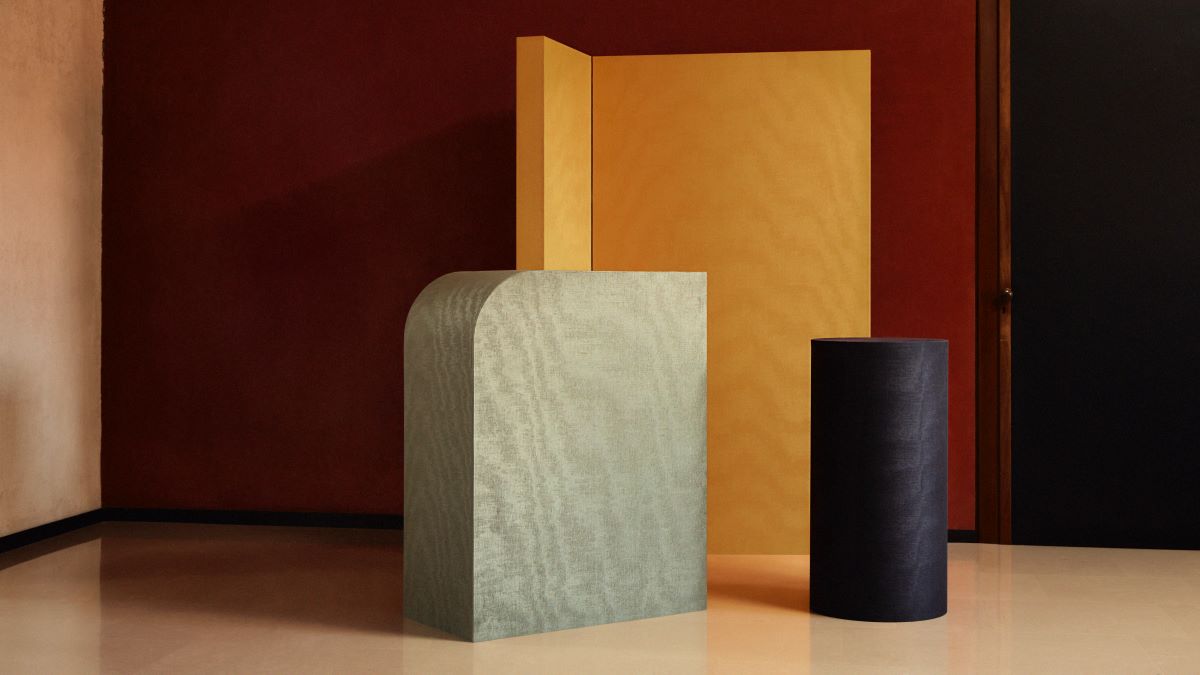
Image credit: Dedar Milano
In the case of Rabdomante, endowed with a totally different personality, an energetic and instinctive topstitched motif leaves its mark on a semi-transparent ground of extra fine wool with a sartorial drape.
Light and translucent, Calicanto Lieve has chosen another direction: an abstract encounter of artfully combined materials, animated by expressive fringes of fil coupé.
Wallcoverings
Dedar has also reinvented the sheer fabrics as wallcoverings. The Goral Wall design combines echoes of organic shapes, similar to branches or corals, with a background of thick, uneven matka silk. Lost in Nazca Wall is a prehistoric labyrinth on pure silk shantung, shot through with a subtle mystery. Za Wall superimposes a pictorial-inspired motif, where a gesture expresses pure action on the frosted effect of pure linen chintz (in its sister piece, Ze Wall, the same motif is matched with a laminated jute background).
In the highly textured Idola Theatri Wall, the amplified light burnishing etches an evanescent forest, halfway between vision and memory, onto the laminated jute; Yamnaya Letters Wall evokes imaginary alphabets and an art that plays with archetypes, again juxtaposing an opaque motif against a luminous chintz background; Marmore Wall conjures up Japanese suminagashi or Turkish ebru marbling, outlining gentle, circular patterns inspired by those found in the natural realm.
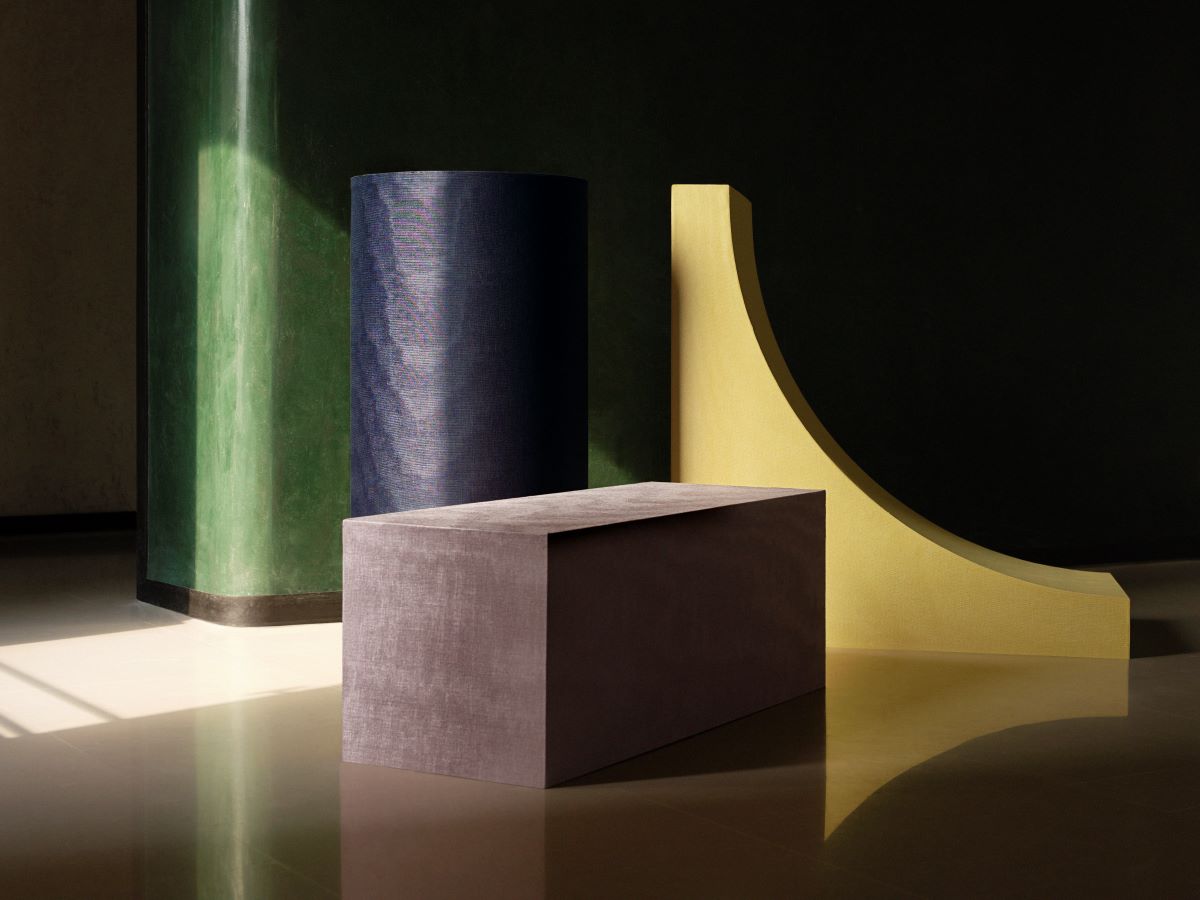
Image credit: Dedar Milano
Moiré Wallcoverings
Since the 1990s, moiré has been “home territory” for Dedar, which has thoroughly reinvented it, overturning its significance and uses. It was not a desecrating reinvention, nor was it a distortion of the inner and authentic nature of a fabric steeped in great tradition, but an effort that has revamped experiences and associations of ideas.
Dedar has stripped away layers of dust and a thick layer of prejudice from the moiré that saw its only use in a classical settings – striped, small-scale, and a by-product of clothing. Instead, Dedar has given these fabrics great scope and a style that resonates more closely with contemporary tastes; recognising their affinities with natural shapes such as marble veining or a wave disrupting the surface of the sea, even more so than with human-made motifs.
Now, Dedar introduces two moirés that complement more silken fabrics and marbled textile wallcoverings — the Amoir Libre and Amoir Fou — that produce a multicoloured “tail” effect that coexists with the new white-based wallcoverings in this collection.
Dedar is one of our Recommended Suppliers and regularly features in our Supplier News section of the website. If you are interested in becoming one of our Recommended Suppliers, please email Katy Phillips.




